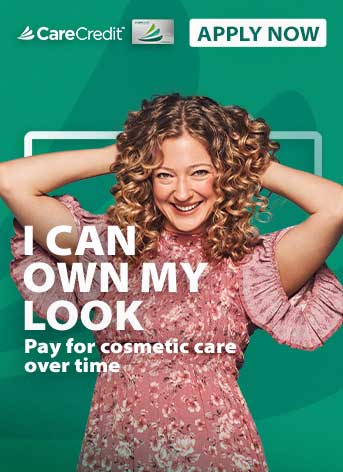A PDO thread lift, also known as a non-surgical facelift, is a cosmetic procedure that tightens and lifts the skin with the use of dissolvable surgical sutures. It's much less invasive than a traditional facelift and gives you similar results with less downtime. Our expert, Dr. Sherly Soleiman, explains more about this popular cosmetic procedure, how it works, and what kinds of results to expect.*
What is a PDO Thread Lift?
A PDO thread lift is a type of minimally invasive surgical cosmetic procedure that promotes collagen production through the use of dissolvable polydioxanone (PDO) surgical sutures, also called threads. Your doctor inserts these threads under the skin in the areas that need tightening or lifting.
Doctors have used PDO threads in traditional surgery to stitch up wounds for many years, so you may have already encountered them. These polymer-based dissolvable sutures are either smooth, twisted or barbed and their presence helps to:
- Encourage collagen production
- Tighten the skin
- Thicken the skin for a firmer look
- Create a bit of lifting, much like a facelift
How Does a PDO Thread Lift Work?
Your doctor performs a PDO thread lift right in their office with local anesthesia. They will use threads that are either smooth, twisted or barbed, depending on what is needed.
Barbed and twisted threads can be tugged on by your doctor to give the skin a bit of lift and maintain that lift by promoting collagen production to keep it in place. The effect is much like a facelift but less invasive.
During a PDO thread lift:
- Your doctor will help determine what kind of lift and the direction of the lift that's needed while deciding where to place the threads.
- Once your doctor knows where the threads will go and what type of threads to use, they will numb the skin.
- The doctor will then inject the threads under the skin and tug, pull or place them using a hollow needle or cannula.
- The threads will treat areas of the face that need some lift, tightening or extra volume.
- When the threads are in place, you can go home right after the procedure.
What Areas Does a PDO Thread Lift Treat?
A PDO thread lift can treat various areas of the face including:
- Brows
- Jowls
- Nasolabial folds
- Under the chin
- Neck
- Any other areas that need a bit of lift or thickening of the skin
Is a PDO Thread Lift Painful?
A PDO thread lift can be painful if the right technique isn't used. However, there are several ways that doctors can ensure that the procedure is as painless as possible, including:
- Applying a numbing cream to the treated area.
- Using injectable numbing agents before the procedure.
- Using injectable numbing agents inside of the thread syringe as they're injecting the threads into the skin.
- Using a cannula, which is not sharp, so it will not cut into the skin.
- Avoiding going through muscles when injecting threads into the skin.
How Long Do PDO Threads Last?
PDO threads may last up to one year, depending on the type of thread used, but the collagen they produce will last about two years. Smooth threads last about six months while barbed or twisted pulling threads will last anywhere from four weeks to one year.
Much like the columns keeping up a house, the more threads that are added during the procedure, the better the hold and the longer the threads will last. At least two or more threads per area treated for maximum effectiveness. And your doctor can add additional threads during subsequent appointments to increase the pulling and tightening effect, as well as the longevity of the threads.
Is a PDO Thread Lift Safe?
Yes, a PDO thread lift is relatively safe because it is not a surgically invasive procedure. Since there is no scalpel or cutting involved, the risk of nerve damage is extremely unlikely. She does say that a doctor could potentially irritate or stretch a nerve, but not permanently damage one.
Do You Feel PDO Threads in Your Face?
You won't feel the threads in your face after the procedure. However, you may experience:
- Tugging
- Soreness
- Puckering
- Mild tingling if the thread is near a nerve
PDO Threads vs. Fillers
Wondering if PDO threads are more comfortable than injectable fillers? This depends on the person and the type of thread.
Smooth threads are usually relatively painless, but with pulling threads like twisted or barbed ones, you may feel tugging and experience potential soreness for a while after the procedure.
Can Threads Work with an Eyebrow Lift?
Yes, you can achieve an eyebrow lift using PDO threads. To achieve more of a defined "pulled up" lift with the threads, she likes to work in a bit of Botox® Cosmetic during the procedure to relax the muscles that could work against the threads. This combination can make the eyebrow thread lift more effective.
How Much Does a PDO Thread Lift Cost?
PDO thread lift costs can vary for each patient depending upon the types and number of threads your doctor uses during the procedure.
- Smooth threads typically cost between $20 to $40 per thread.
- Pulling (barbed) threads can cost between $200 to $500 a thread.
- Many doctors use a combination of different types of threads.
- Doctors may charge by smaller areas of the face or only do the whole face, which will generally cost more.
- Expect to pay between $2,000 for a smaller area and between $6,000 and $10,000 for the whole face.
CareCredit for a PDO Thread Lift
A PDO thread lift can help you achieve a tighter and more youthful appearance without the downtime required for a traditional facelift. The CareCredit credit card can also help you pay for a number of plastic surgery procedures at locations in the CareCredit network like this one that your health insurance most likely won't cover.** These procedures include:
- Liposuction
- Eyelid surgery
- A breast lift or breast augmentation
- Tummy tuck surgery
- A Brazilian Butt Lift
- CoolSculpting®
- A nose job (rhinoplasty)
- A neck lift
- Lip fillers
Meet the Experts
Dr. Shirley Soleiman
Dr. Soleiman is a board certified physician and injectables specialist. She is the founder of the Cosmetic Injectable Center in Sherman Oaks, California.
Author Bio
Susan Paretts is a freelance writer with 18 years of experience covering health and wellness, pet care, and more. Her work has been published by the American Kennel Club, Bayer Animal Health, Elanco, LIVESTRONG.com, The San Francisco Chronicle, Chewy, and more.










